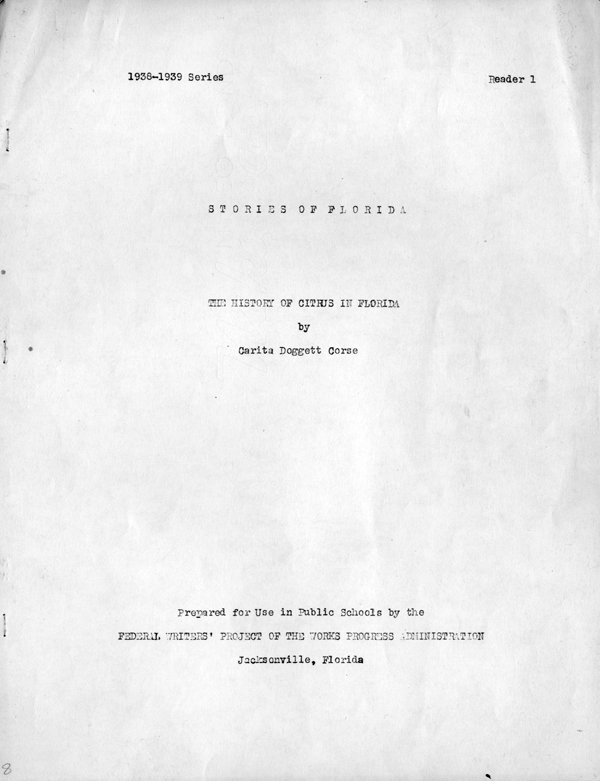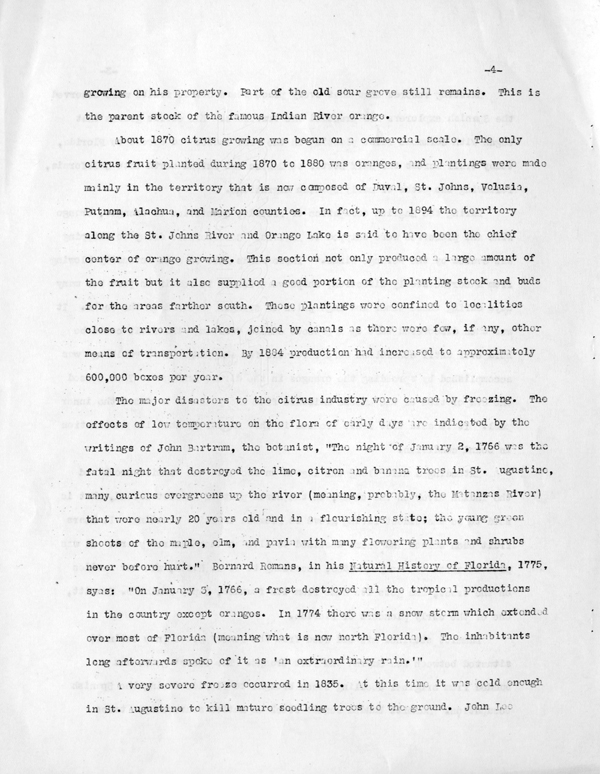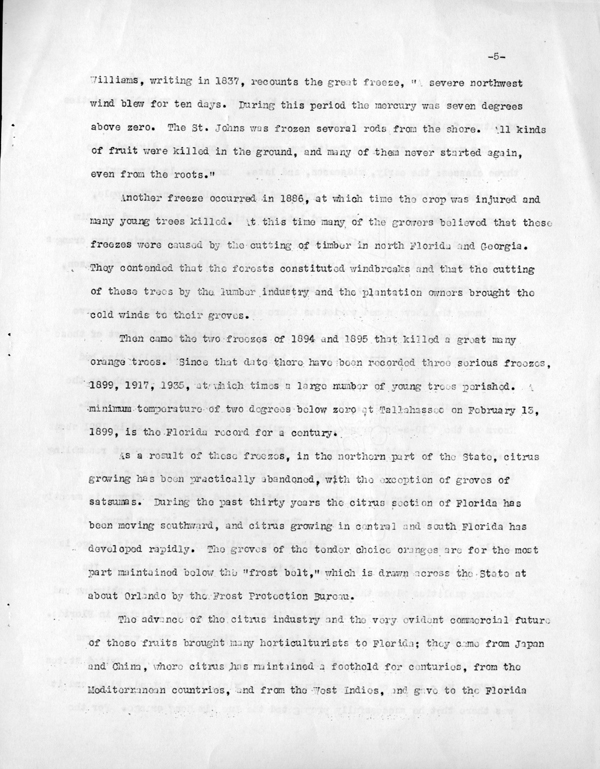Florida Memory is administered by the Florida Department of State, Division of Library and Information Services, Bureau of Archives and Records Management. The digitized records on Florida Memory come from the collections of the State Archives of Florida and the special collections of the State Library of Florida.

State Archives of Florida
- ArchivesFlorida.com
- State Archives Online Catalog
- ArchivesFlorida.com
- ArchivesFlorida.com
State Library of Florida
Related Sites

Description of previous item
Description of next item

Title
Published Date
[page 2]
savanna. At all of these places he speaks of the magnificent orange trees covered with golden fruit and
fragrant blossoms. One grove he describes as follows: "Orange trees were in full bloom and filled the
air with fragrance," and another grove, "On the right hand was an orangery, consisting of many hundred
trees which were large flourishing and in perfect bloom and loading with their ripe golden fruit."
At the time of Bartram's travels, there were few white people in Florida, and the
Indians were the principal consumers of oranges. The three varieties of oranges then existent in
Florida were known to the Seminole as "Yakkaga" (sweet), "Yallahassompa" (bitter), and
"Yallahoochena" (sour). The only method of transportation was by water, and even for this
purpose only a few boats were available; consequently very little of the fruit found its way out
of the immediate region in which it was produced.
By 1779, during Humboldt's travels in the Antilles, the citrus had become an integral
part of the Island vegetation, and caused Humboldt to remark: "St. Augustine was like an
orange grove."
The importation of citrus fruits from the Islands to the Florida mainland is explained by
the Encyclopedia Britannica as follows: "Some of the earlier botanical explorers regarded
oranges as an indigenous tree; but it was undoubtedly bought by the Spanish Colonists to the
West India Islands, and was probably soon afterwards transplanted to Florida by them or their
buccaneering enemies."
Dr. H. Harold Hume, eminent citriculturist, explains how the orange and lemon became
so generally disseminated after their introduction to Florida: "The fruit was obtained by
Indians and carried about; seeds dropped eventually produced trees where they had been
deposited. As a result, wild groves were formed on shores and lakes and streams."
Title
Subject
Description
Creator
Source
Date
Contributor
Format
Language
Type
Identifier
Published Date
Image URL
Thumbnail
Transcript Path
Image Path
Image Path - Large
Chicago Manual of Style
Corse, Carita Doggett. The History of Citrus in Florida. 1938. State Archives of Florida, Florida Memory. <https://www.floridamemory.com/items/show/181524>, accessed 2 January 2026.
MLA
Corse, Carita Doggett. The History of Citrus in Florida. 1938. State Archives of Florida, Florida Memory. Accessed 2 Jan. 2026.<https://www.floridamemory.com/items/show/181524>
AP Style Photo Citation
(State Archives of Florida/Corse)

 Listen: The Assorted Selections Program
Listen: The Assorted Selections Program





